
Amaranthaceae is a family of flowering plants commonly known as the amaranth family, in reference to its type genus Amaranthus. It includes the former goosefoot family Chenopodiaceae and contains about 165 genera and 2,040 species, making it the most species-rich lineage within its parent order, Caryophyllales.

Gunnera is the sole genus of herbaceous flowering plants in the family Gunneraceae, which contains 63 species. Some species in this genus, namely those in the subgenus Panke, have extremely large leaves. Species in the genus are variously native to Latin America, Australia, New Zealand, Papuasia, Hawaii, insular Southeast Asia, Africa, and Madagascar. The stalks of many species are edible.
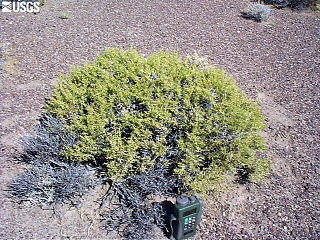
Sarcobatus is a North American genus of two species of flowering plants, formerly considered to be a single species. Common names for S. vermiculatus include greasewood, seepwood, and saltbush. Traditionally, Sarcobatus has been treated in the family Chenopodiaceae, but the APG III system of 2009 recognizes it as the sole genus in the family Sarcobataceae.

Pera is a genus of plants in the family Peraceae native to tropical America, from southern Mexico and the West Indies south as far as Paraguay. It first described as a genus in 1784.

Clethra is a genus of flowering shrubs or small trees described as a genus by Linnaeus in 1753.
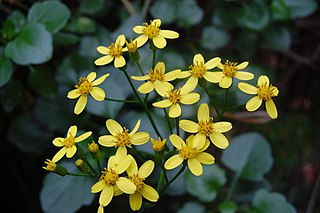
The eudicots, Eudicotidae, or eudicotyledons are a clade of flowering plants mainly characterized by having two seed leaves upon germination. The term derives from Dicotyledons.

The Achatocarpaceae are a family of woody flowering plants consisting of two genera and 11 known species, and has been recognized by most taxonomists. The family is found from the southwestern United States south to tropical and subtropical South America.

The Marcgraviaceae are a neotropical angiosperm family in the order Ericales. The members of the family are shrubs, woody epiphytes, and lianas, with alternate, pinnately nerved leaves. The flowers are arranged in racemes. The flowers are accompanied by modified, fleshy, saccate bracts which produce nectar. The flowers are pentamerous. The fruits are capsules.

Myrciaria is a genus of large shrubs and small trees described as a genus in 1856. It is native to Central and South America, Mexico, and the West Indies, with many of the species endemic to Brazil. Common names include hivapuru, sabará, and ybapuru.

Phytolaccaceae is a family of flowering plants. Though almost universally recognized by taxonomists, its circumscription has varied. It is also known as the Pokeweed family.
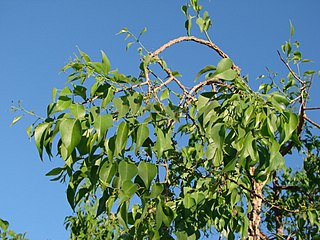
Agonandra is a genus of plants in the family Opiliaceae described as a genus in 1862.

Perrottetia is a genus of flowering plants in the family Dipentodontaceae described as a family in 1824. Species occur in China, Southeast Asia, Papuasia, Hawaii, Australia, and Latin America. It is the largest genus of the recently described order Huerteales.

Brunellia is a genus of trees. They are distributed in the mountainous regions of southern Mexico, Central America, West Indies, and South America. Brunellia is the only genus in the family Brunelliaceae. As of 2001 there were about 54 species.
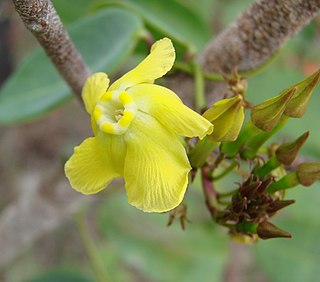
Prestonia is a genus of plants in the family Apocynaceae, first described as a genus in 1810. It is native to Mexico, Central America, South America, and the West Indies. It is closely related to Artia and Parsonsia.

Caryophyllales is a diverse and heterogeneous order of flowering plants that includes the cacti, carnations, amaranths, ice plants, beets, and many carnivorous plants. Many members are succulent, having fleshy stems or leaves. The betalain pigments are unique in plants of this order and occur in all its families with the exception of Caryophyllaceae and Molluginaceae.

Trichostigma peruvianum is a species of flowering plant in the family Petiveriaceae. It was formerly placed in the family Phytolaccaceae. It is native to Ecuador, Colombia, and Peru.
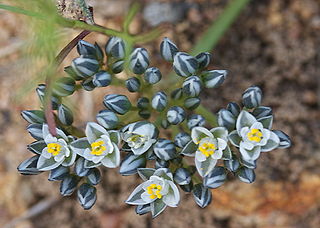
Limeum is a genus of flowering plants. It includes 25 species.
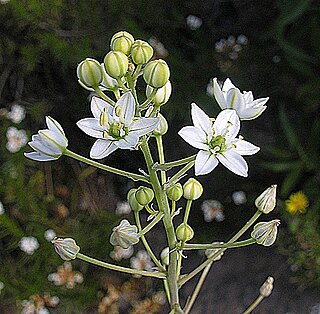
Oziroe is a genus of bulbous South American plants in the squill subfamily within the asparagus family. Within the Scilloideae, it is the sole member of the tribe Oziroëeae and the only genus in the subfamily to be found in the New World.
Joan W. Nowicke is an American botanist natural from St. Louis, Missouri. She worked 27 years for the Smithsonian Institution, between 1972 and 1999, in the Department of Botany, from the National Museum of Natural History. Nowicke is a global reference as a palynologist, mainly due to her specialization in pollen morphology and its relationship with systematics, in addition to her extensive work in the area of Caryophyllales palynotaxonomy.

Herbstia is a monotypic genus of flowering plants belonging to the family Amaranthaceae. It only contains one species, Herbstia brasiliana(Moq.) Sohmer It is within the Amaranthoideae subfamily.


















